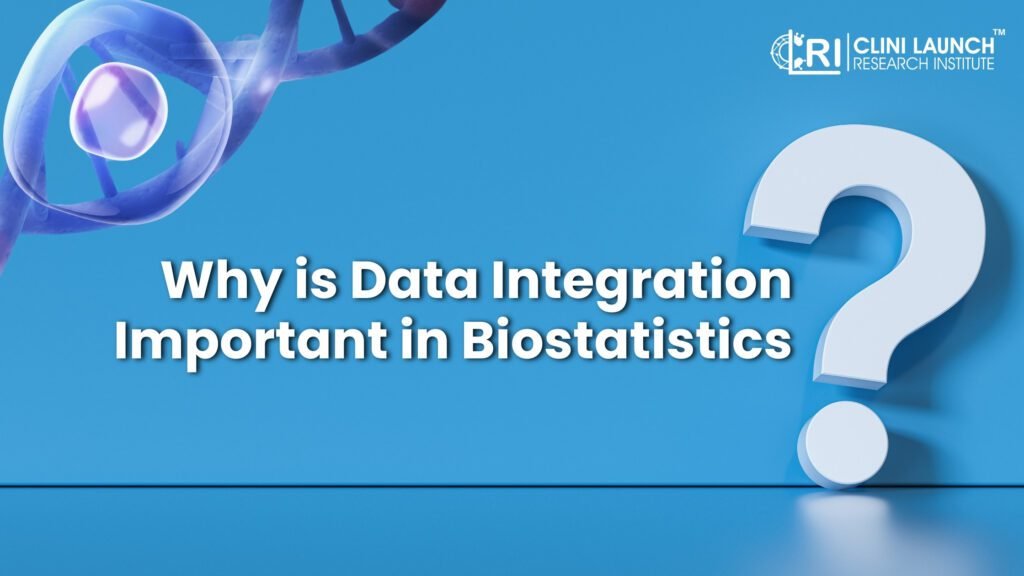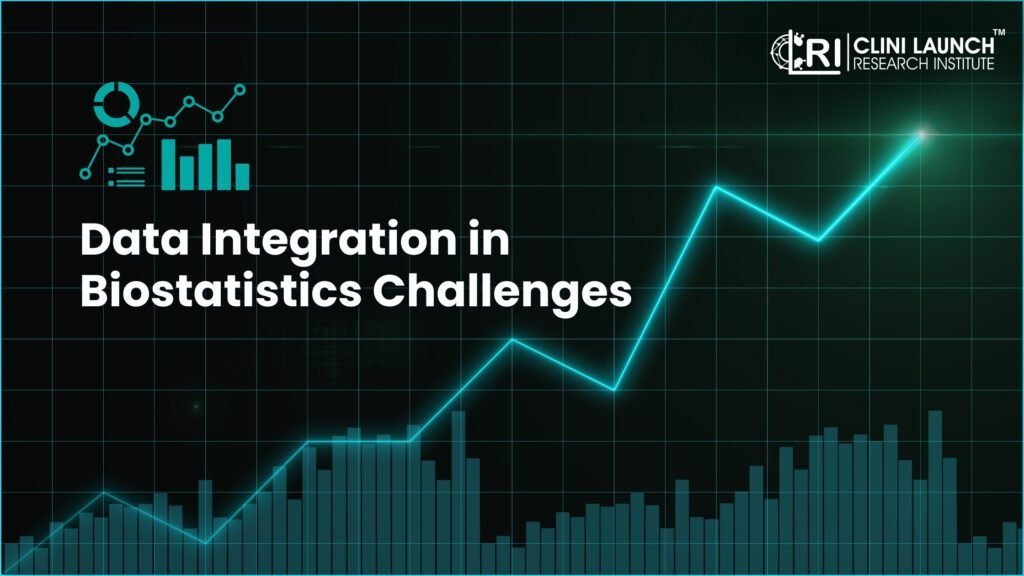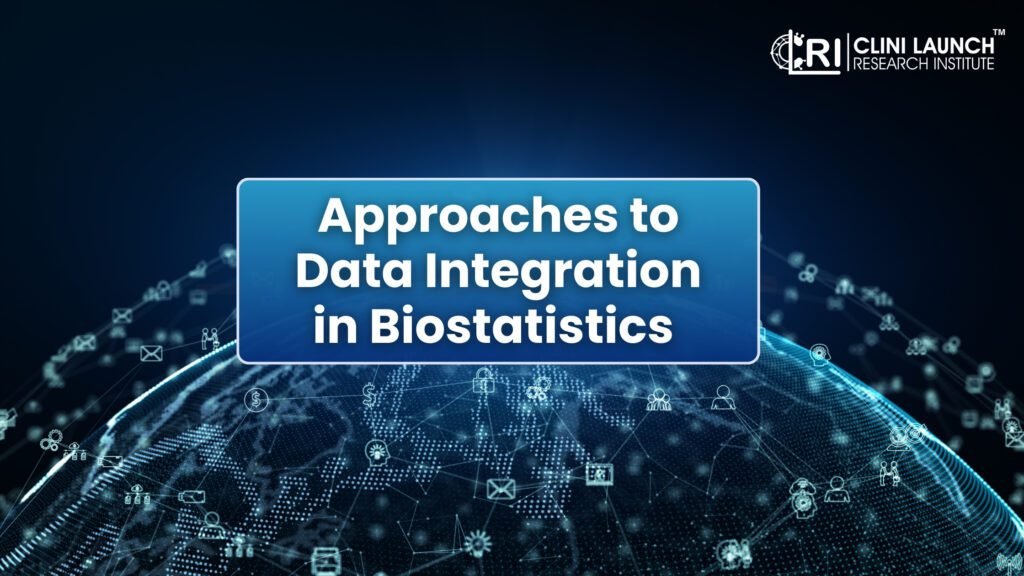In the era of big data, data integration in biostatistics plays a key role in ensuring quality and integrity. Just like the same, biostatisticians also become increasingly important in the field of precision and personalized medicine. They use statistical analysis, randomization, and study design to produce reliable results and make evidence-based decisions. According to the NHS Constitution UK, pharmaceutical treatments only work for patients from 30 to 60%.
Healthcare professionals like Biostatisticians are shifting towards precision medicine. It includes analysis of healthcare data, and detailed biometrics such as activity monitoring, and dietary trackers. They approach it with data science tools to predict effective treatment with biometrics. In this blog post, we will be discussing about what is data integration in biostatistics, its importance, challenges, and approaches.
What is Data Integration in Biostatistics?
Data integration, encompassing clinical trials, electronic health records (EHRs), genomics, proteomics, and other “omics” data, provides a unified view of diverse information. This consolidated perspective empowers researchers to gain a deeper understanding of diseases, pinpoint novel therapeutic targets, and ultimately personalize treatments to cater to the unique needs of individual patients.
Why is Data Integration Important in Biostatistics?

Creative Designed by Md Aayan Ansari (Graphic Designer at CliniLaunch)
According to the Business Research Company, the market size of data integration has grown from $13.97 billion in 2024 to $15.22 billion in 2025. It is growing with a 9.0% compound annual growth rate. In the current scenario, modern organizations typically use multiple services, tools, and technologies to collect and store data. The challenges may occur when working in silos within the organizations. The data may be in diverse formats for different functions and the external systems may have to reformat the existing datasets.
Data integration in biostatistics aims to solve specific programs or challenges that may occur through the adoption of different methods to get access in a consistent way. Here are some benefits of data integration:
- Enhanced understanding: With the integration of diverse data sources, researchers can gain a more holistic view of diseases, their underlying mechanisms, and patient outcomes.
- Improved Decision-Making: Integrated data can inform more accurate diagnoses, predict disease risk, and optimize treatment plans.
- Accelerated Drug Discovery: Integrating data from preclinical studies, clinical trials, and real-world evidence can accelerate the drug development process and improve the success rate of new therapies.
- Personalized Medicine: Integrating patient-level data with genomic and other “omics” information can enable the development of personalized treatment plans that are tailored to an individual’s unique characteristics.
Data Integration in Biostatistics Challenges

Creative Designed by Md Aayan Ansari (Graphic Designer at CliniLaunch)
Common challenges that biostatisticians encounter with data integration include unifying inconsistent data silos, multiple data sources, poor quality data, keeping up with large data volumes, and different data formats. In the context of UNESCO‘s commendable efforts to combine diverse data sources for sustainable development goals represent significant progress in informing the global community. However, this data integration in statistics must adhere to the best practices in the industry prioritizing needs and consistent estimates.
- Data Heterogeneity: Data from different sources often have varying formats, structures, and quality, making it challenging to combine them effectively.
- Data Privacy and Security: Integrating sensitive patient data requires robust data privacy and security measures to protect patient confidentiality.
- Data Quality: Ensuring the accuracy, completeness, and consistency of integrated data is crucial for reliable statistical analysis.
- Computational Challenges: Analyzing large and complex integrated datasets requires sophisticated computational methods and high-performance computing resources.
Approaches to Data Integration in Biostatistics

Creative Designed by Md Aayan Ansari (Graphic Designer at CliniLaunch)
Data integration in statistics involves combining data from diverse sources like electronic health records, clinical trials, and genomics databases. This crucial step enables researchers to gain a comprehensive understanding of complex biological systems and improve healthcare outcomes. Common approaches include data warehousing, data federation, and cloud-based solutions, each with its own strengths and weaknesses depending on factors such as data volume, variety, and the specific research question.
- Database Integration: Creating a centralized repository to store and manage data from multiple sources.
- Data Warehousing: Building a data warehouse to store and analyze large volumes of data from various sources.
- Data Mining and Machine Learning: Applying advanced statistical and machine learning techniques to extract meaningful insights from integrated data.
- Network Analysis: Modelling complex relationships between different data sources using network analysis techniques.
Conclusion
Data integration in biostatistics is a critical area of research with the potential to revolutionize healthcare. By effectively integrating diverse data sources, biostatisticians can get valuable insights, improve patient outcomes, and accelerate the development of novel therapies. Addressing the challenges associated with data integration will require ongoing collaboration between statisticians, computer scientists, and domain experts. For this, CliniLaunch is the best biostatistics training institute in India providing healthcare professionals the platform to upskill and grow their career as a biostatistician.
